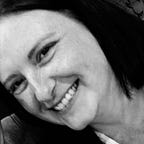Where can I go for support with anxiety
I remember the fast beating of my heart, the lump in my throat, feeling weak at the knees. Maybe it was when I pressed the send button for my assignment, maybe when I had to give a presentation at work. This is my fight or flight system warning me that I am facing a threat, not a physical threat which is right there in front of me, but a possible threat in the future. Maybe I would fail my assignment or forget what I was saying to my audience. This physical response to an unknown future is called anxiety.
Now, imagine that the physical response, the worry, the feeling of failure is with me more often and my heart is beating so fast that I worry I am having a heart attack, so I drop out of university, I call in sick for my presentation. The anxiety has gripped me so tightly that my life has become torture rather than enjoyable. It keeps me awake until I am worrying about how much I am worrying. It stops me from seeing my friends because I am certain they can see that I don’t really want to be there. It stops me from going to the shop in case I can’t breathe, and everyone laughs at me or that lump in my throat comes up and I am sick everywhere. This is usually when people will seek help. Where would I go? To the doctor? To a therapist? Maybe both. Maybe I will talk to my friends, if I am not also worrying about what they will think of me.
Anxiety is a feeling of fear which is exacerbated by certain situations, creating physical responses. Although anxiety is a well-known construct there are differing ways of treating it depending on the worldview researching or treating it. Cognitive Behavioural Therapy (CBT) is one of these. CBT therapists understand anxiety as a cycle of unhealthy thoughts, feelings and behaviours. They consider anxiety to be the result of an individual’s catastrophising, over-generalising and personalisation, the cure being to change the individual’s beliefs. Does CBT alone always cure anxiety?
The medical model places anxiety firmly within the biology of the individual, which can only be managed using biological treatments such as anti-depressants. The medical model has only been used to diagnose anxiety since the Diagnostic and Statistical Manual of Mental Disorders (DSM) was updated in the 1980’s. The medical model has based the belief that anti-depressants will fix the anxiety via research and the understanding that the condition and treatment has proven reliability and validity. Does medication alone always cure anxiety?
Researchers taking social constructivist approaches have provided a social model for anxiety, which places emphasis on the life experiences of the individual. Johnstone and Dallos (2013) suggest a formulation meeting with the individual to understand their history, the current effects of this and how to improve the social situation. For example, cultural psychologists have found correlations between countries with minimal kinship ties and high incidences of anxiety (Markus and Kitayama, 1991). Having the medical, CBT and social models present at the same time illustrates that concepts are active within the same time and the choice of treatment varies widely.
Which route we chose or are advised to take has often been endorsed. For example, research into the effectiveness of CBT is often endorsed and informed by psychological professionals. To understand and gain knowledge of the effect of the therapy professional training needs to be completed. For CBT this is psychological training. Researchers with this educational background leads to inquiries focussed on the effects of the therapy in a psychological way. This manifests as a neglect of alternative variables such as social events. By acknowledging and putting aside this view and using a researcher who does not have an interest in the outcomes, the research is attentive to active concepts and alternative outcomes, according to the time, place and context, making it a more reliable experiment.
Personally, I have tried all the above routes, some times together, at others on their own and have known others who have tried one, two or all. Each treatment has had its individual merits however, they also have their downfalls and they cannot work alone. My success in working through this sometimes-crippling illness has been to take anti-depressants while undergoing therapy. As things have come up in therapy that are social difficulties, I have dealt with those too. Difficulties such as the people in my life, not being happy in my then home. Everything is a cycle and bounces off each other. No one size fits all and where some treatments can be helpful for some, there will always be people who were not accounted for in the experiments, who need a different treatment or a mixture of all.
I planted flowers this year, they are blooming. My garden has colours like a rainbow which the sun is beginning to reflect off. I have cut negative and abusive people out of my life and I have made my house a home. I was so tired doing these things and it took a serious amount of motivation, but I was proud. I had beaten my brain. I had fought the palpitations and the nausea, and I had completed a goal. I had managed something which only a few months ago I thought I would never be able to do again. I did it.
If there is an opportunity to grasp something that seems impossible, but could, maybe, offer the support that could help even the tiniest part of life improve grab it, feel it, believe in it. I did and I have a long journey to go but I am crawling forwards again instead of falling backwards.
